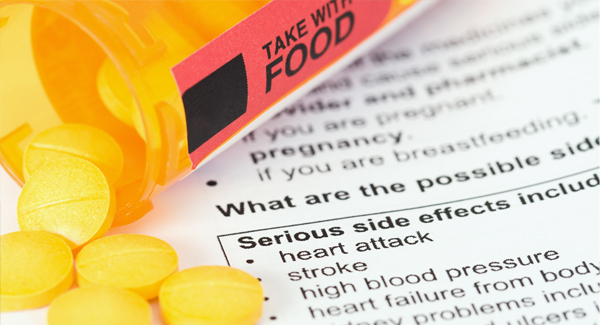Methotrexate: Managing Side Effects
Folic acid supplements and monitoring tests are key for reducing your risk of methotrexate side effects.
Methotrexate is one of the most effective and widely used medications for treating inflammatory types of arthritis. It’s also one of the safest arthritis drugs, despite a common misconception among many patients that methotrexate is highly toxic.
Confusion about this medication’s safety seems to exist because it is also used – in much higher doses – for treating some forms of cancer. Most people who use methotrexate to treat their inflammatory arthritis take between 10 mg and 25 mg per week. By contrast, the doses used to treat leukemia and other types of cancer may be hundreds of times larger.
That’s not to suggest that taking methotrexate is risk-free. But doctors who prescribe methotrexate for arthritis say that following a few simple steps can make it even safer to use and reduce potential side effects.
Managing side effects is part of the treatment journey for many people taking methotrexate. This article breaks down what is normal, what is not and when to speak up. Complex science becomes practical knowledge that readers can use right away. Please donate and help someone feel more in control of their care.
How Methotrexate Works
Understanding how methotrexate works helps explain why it can cause unwanted effects. Originally developed as a cancer drug, methotrexate stops cancerous cells from rapidly multiplying and spreading by blocking their access to folate, a form of vitamin B. Unfortunately, depleting the body of folate can affect healthy cells, too, especially those in the gastrointestinal (GI) tract, mouth and hair follicles.
Blocking folate fights cancer, but that’s not why it helps arthritis. Researchers believe that methotrexate slows the progression of RA and relieves symptoms by causing cells to release a molecule called adenosine, which blocks other chemicals that promote inflammation, explains Edwin Chan, MD, a rheumatologist and researcher at the New York University School of Medicine. This happens unrelated to folate.
Common Side Effects
GI problems such as nausea and vomiting are the most common side effects associated with methotrexate, affecting between 20% and 65% of rheumatoid arthritis (RA) patients who take the drug. Up to one-third develop mouth ulcers or sores. Many also complain of headaches, fatigue and an overall “blah” feeling. This is sometimes called “methotrexate fog,” and can occur a day after receiving a dose of methotrexate (which is taken in pill form or injected once a week). Hair loss is a relatively uncommon side effect in people who take methotrexate at arthritis-relieving doses.
Side Effects Prevention Tips
The good news: These common side effects can often be short-circuited by taking a folic acid supplement. Folic acid is the synthetic form of folate. One study found that RA patients on methotrexate who took folic acid supplements lowered the risk of GI problems and mouth sores by 79%.
Ask your doctor for complete instructions for using folic acid supplements because dosages and when you take them can vary. Some physicians recommend taking 1 mg of folic acid daily, whereas others instruct patients to pop a single 5-mg dose once a week. You may also be told to take folic acid 24 hours after receiving a dose of methotrexate.
A few additional steps may help prevent or relieve GI and oral problems:
-
Split the dose. Most arthritis patients take methotrexate orally, in a dose consisting of several pills. Some find that splitting the dose eases GI side effects. Take half the pills in the morning and the other half 12 hours later, preferably with food.
-
Ask about anti-nausea medication. For very severe stomach upset, your doctor can prescribe an anti-nausea drug such as ondansetron (Zofran).
-
Switch to injections. When nothing else helps, switching from oral methotrexate to the injectable version can eliminate GI distress.
-
Try a rinse. To relieve painful mouth sores, a salt-water rinse or special mouthwash containing lidocaine (a pain reliever) may help.
Protect the Liver
Releasing adenosine may fight inflammation and help relieve painful, swollen joints. But Dr. Chan notes that adenosine also causes fibrosis, or buildup of scar tissue, in the liver. Over time, that could result in liver disease. To monitor and limit your risks, your doctor may recommend you avoid alcohol and will run routine blood tests to monitor your liver function. Keep in mind that only about 1 in 1,000 patients with RA who are taking methotrexate experience serious liver damage.
Watch for Other Complications
Methotrexate users may develop other issues, but many can be monitored by regular blood tests. These side effects often go away if you stop taking the drug temporarily (which should only be done under a doctor’s supervision). Risks and side effects to be aware of:
-
Fibrosis and inflammation in the lungs. If you do have a dry cough, shortness of breath, or any other respiratory problems, make sure to tell your doctor.
-
A drop in white blood cells, which could cause infections.
-
A dip in production of blood platelets, which could cause abnormal bleeding.
You may be wary of side effects with methotrexate, but most people tolerate the drug quite well, especially if they take folic acid, follow doctors instructions and practice other good health habits.
Methotrexate Side Effect Stats
20-65%: People taking methotrexate with GI problems such as nausea and vomiting.
79%: RA patients on methotrexate who took folic acid supplements and lowered the risk of GI problems and mouth sores.
15-50%: Patients on long-term methotrexate therapy who experience elevations in liver tests. These increases are usually mild and resolve without treatment.
Good information supports better decisions and stronger self-advocacy. Your support helps ensure that people never navigate treatment alone.

Stay in the Know. Live in the Yes.
Get involved with the arthritis community. Tell us a little about yourself and, based on your interests, you’ll receive emails packed with the latest information and resources to live your best life and connect with others.


